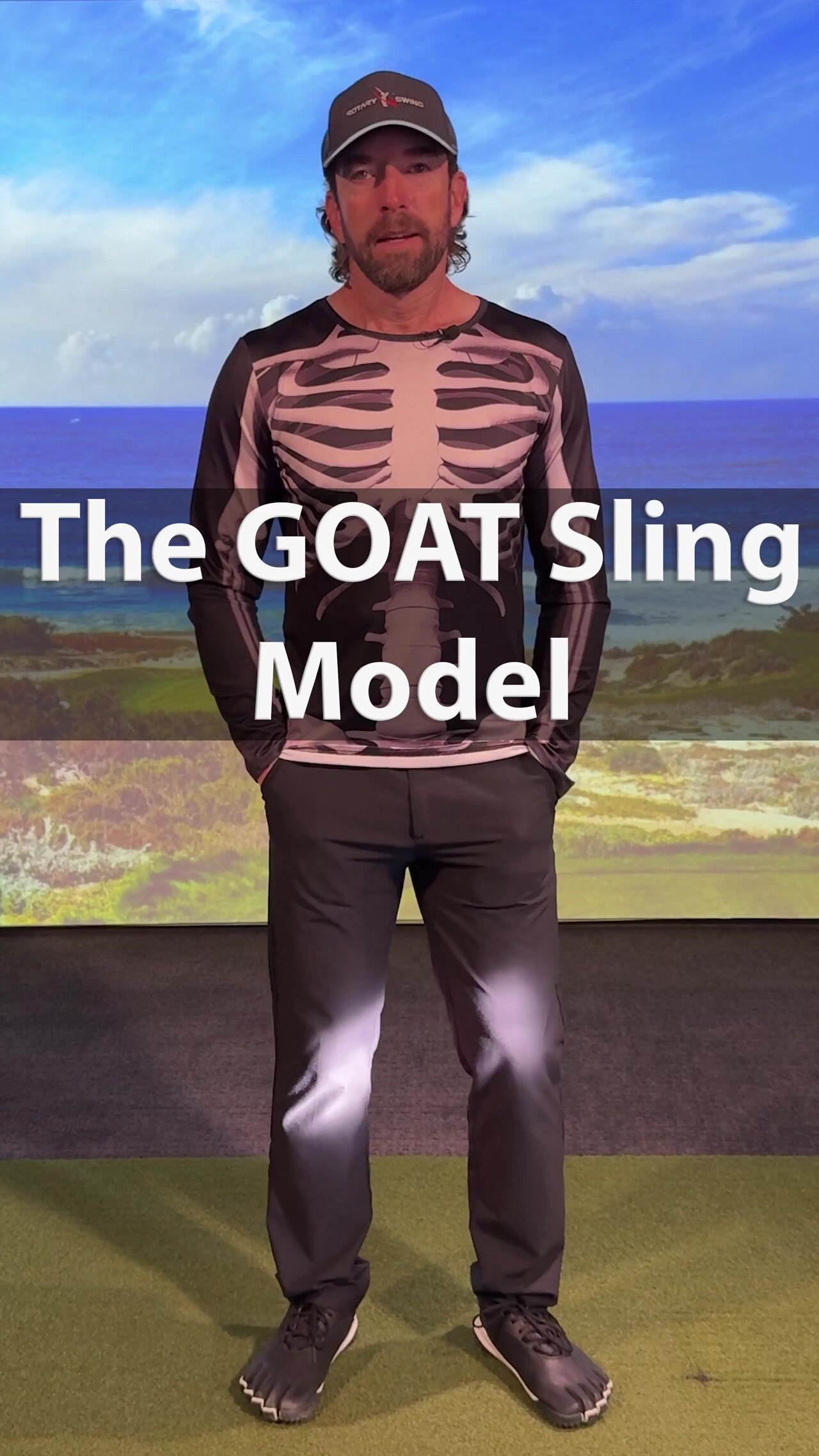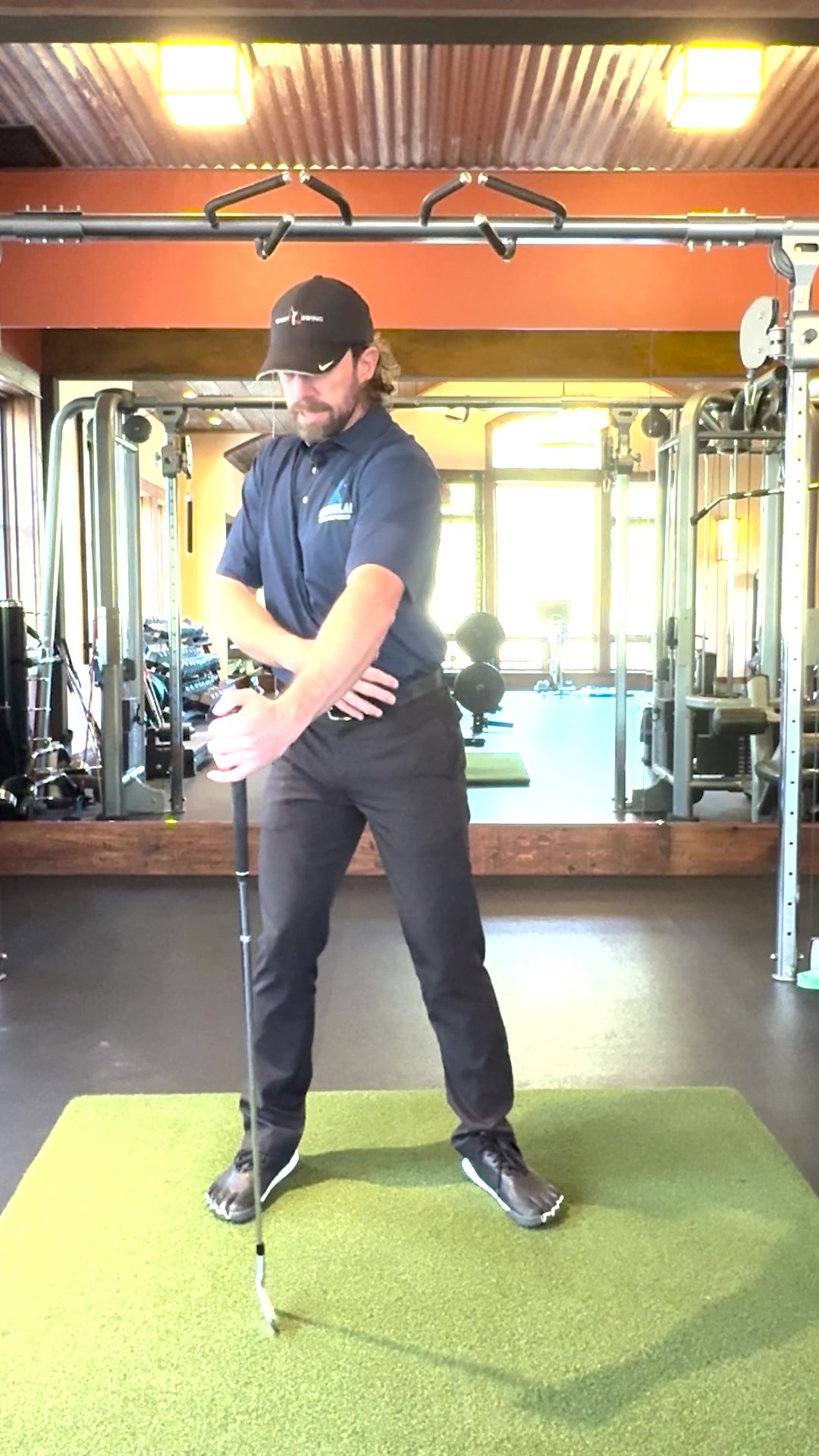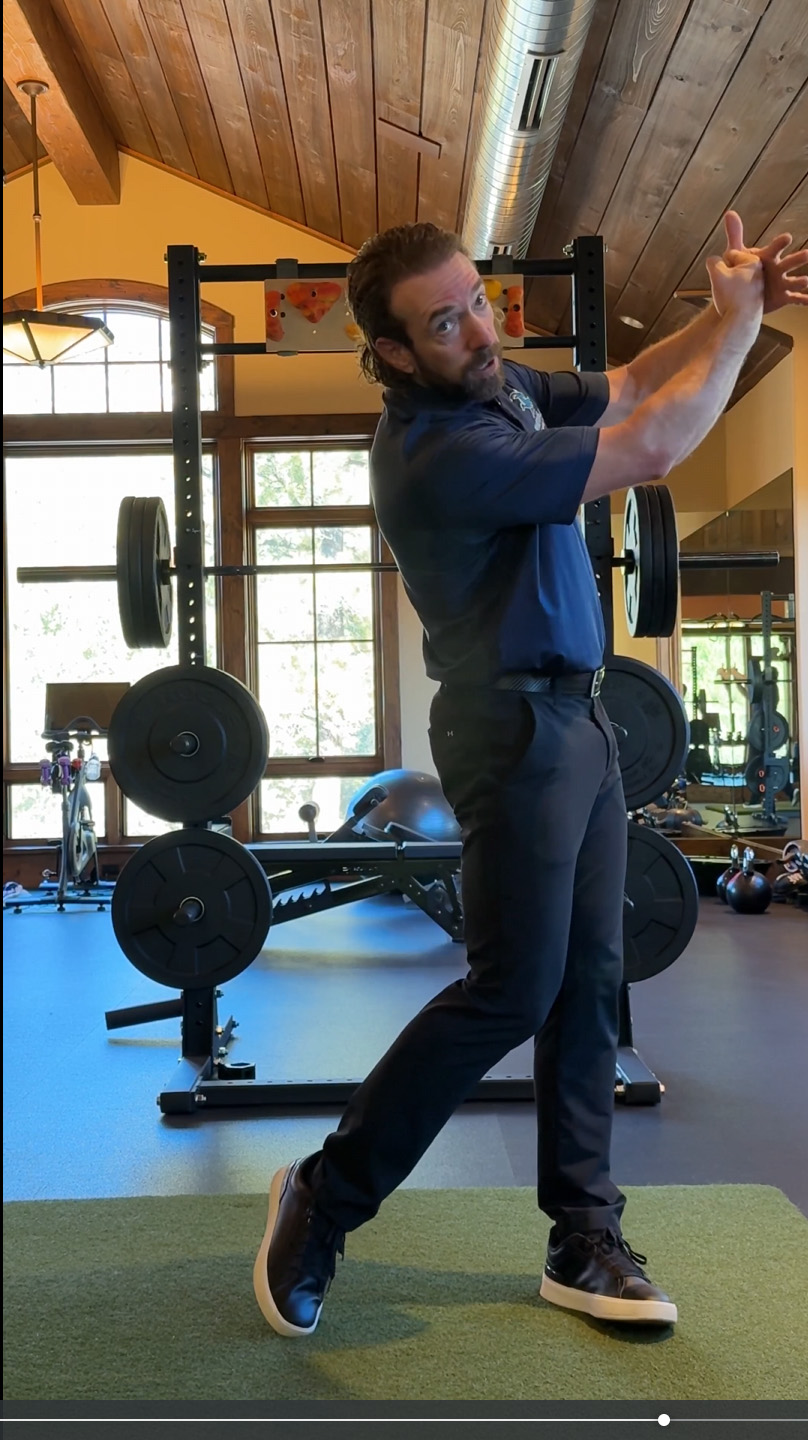The "squat move" that Tiger Woods appears to do in his downswing has been widely criticized by the TV golf pundits over the years because of how much his head lowers during this move. However, I've pointed out how it is actually Tiger's most powerful move and a critical one for stability in the downswing.
In this video I point out why this move is an important one you'll want to master in your downswing to help you hit not only more powerful shots but more accurate ones as well.
The "Tiger Squat" serves several purposes in the downswing. This powerful move
- Engages the powerful gluteus muscles,
- Allows the golfer to use the ground to create leverage,
- Stabilizes the pelvis and, thus, the lumbar spine, and
- Slows down the rotation of the hips.
These things lead to a downswing that is easier to control, as the hips don't spin out of control, and is more powerful, as the two thickest muscles (the glutes) can be used for power as well as stability.
In the image sequence below (taken from the video), you can see how the initial squat move maintains the spacing between the knees, which is critical for the lower body to provide stability, and this is maintained all the way into impact.
Into the follow through, the glutes are contracted, and the left leg straightens to snap the release of the club and stabilize the pelvis.
Video Transcription: The Tiger Woods Squat

Tiger's squat
One of the most criticized motions in Tiger's golf swing from the TV pundits has always been the squat move, where his head lowers during the downswing.
What that looks like is that he gets to the top of the swing and he starts to get leverage. He looks like he squats and his head lowers a little bit, then it comes back up a little bit. Sam Snead had a similar move. Lots of golfers who have built a lot of power in their swing without a lot of effort have done a very similar move.
I've always argued that it's the most powerful move in Tiger's golf swing, and I'm going to show you why.
That squat move allows a couple of things to happen. The first thing is it allows you to use the ground for leverage and build a stable base. That's critical because really, as we've learned, we're just wanting to maintain lag to here and then we release it at the bottom. You need a stable base in order to have a solid impact position.

Feet planted for stability
If your legs are just spinning out from under you all the time and you're always just flipping at the ball with the club, you don't have any stability at impact. You need to have a stable base so that when you fire that arm and release the club you have control at impact.
Squatting allows you to use the leverage of the ground to push against it and activate your glute muscles. All these hip stabilizer muscles and glutes allow you to anchor the hips and feel stable, rather than just lazily spinning through impact.
You want to feel powerful and stable at impact and be able to leverage the ground. If you don't squat, you can't do that. If you're just here, and then you just spin, it doesn't look like I leveraged anything.
I need to feel like I'm loading my glutes and anchoring myself to the ground and pushing my feet into the ground so that as I come through in the next move that we're going to talk about, I'm able to perform it correctly.

Hip spinners' hands end up here
The next thing is, for most of my better golfers, they're all hip spinners. Almost all the professionals I work with struggle with getting a little bit stuck underneath coming in, and then spin through and they end up hitting a higher ball flight than what they want. That puts too much spin on the ball, and also leads to blocks and hooks.
When I teach them this move, it helps slow down their hips. That's a critical piece because you don't need fast-spinning hips in the downswing. All that does is get your arms stuck. Your hips don't have to move very far in the downswing to get back to where they need to be at impact, but your hands have a very long ways to go.
If you go to the top and just spin your hips, your hands are always going to be in this position. They don't have time to catch up. They simply can't move that fast, but your hips can snap really quick and leave you in this stuck position all the time.
We spend a lot of time working with these golfers to slow their hips down so that they have time to sequence everything and get their arms back in front of their body at impact.

Squatting slows rotation, improving stability
This is one of those critical moves that, as they squat into the ground, it slows the initial rotation down so that what they're able to do is build a stable base, start pulling their arms down, and then at impact they're able to leverage the ground with both legs, and push up off of it.
That might sound like a strange concept, but it's critical. What's happening is, as I'm doing this squat move, then as I'm coming up out of it, I'm pushing against the ground. Quite literally, I'm pushing my left leg - both legs, but primarily the left - and straightening it.
What that's doing is moving my body this way, back up, and forcing the club to release down that way. You get an "equal and opposite" effect. As your body is moving one way, you're forcing the club to release even faster at the bottom. That's a pretty advanced thing.
If you're a typical amateur, higher-handicap golfer, you're not ready for this stuff yet, but for pros or better amateur players who are looking to build speed and power in their swing, this is a critical move to stabilize and then get that last bit of release at the bottom.

Squatting leverages the glutes
If I just went to the top and spun my hips, all I've got is a really weak club head coming through impact. If I go to the top and I squat and leverage my glutes, push into the ground, as I set into this left side and I start to fire those glutes pushed against the ground, now I've got a big snap at the bottom and a ton of release. It also helps slow my hips down, which gives me time to get my arms back in front.
If you're a hip spinner, learning to squat into the ground and feel like you push your feet into the ground, then fire everything through, it's going to help you build a lot more speed with a lot less effort.
It will finally teach you what it feels like to leverage the ground and activate the hip stabilizer muscles, the glutes, and all these big, powerful muscles in your torso and your trunk, and finally build power in your golf swing without a lot of muscular effort.
Watch part 2 now to see how you're moving your body in the opposite direction of the pros!











































































































































































































 Tiger's squat
Tiger's squat Feet planted for stability
Feet planted for stability Hip spinners' hands end up here
Hip spinners' hands end up here Squatting slows rotation, improving stability
Squatting slows rotation, improving stability Squatting leverages the glutes
Squatting leverages the glutes
